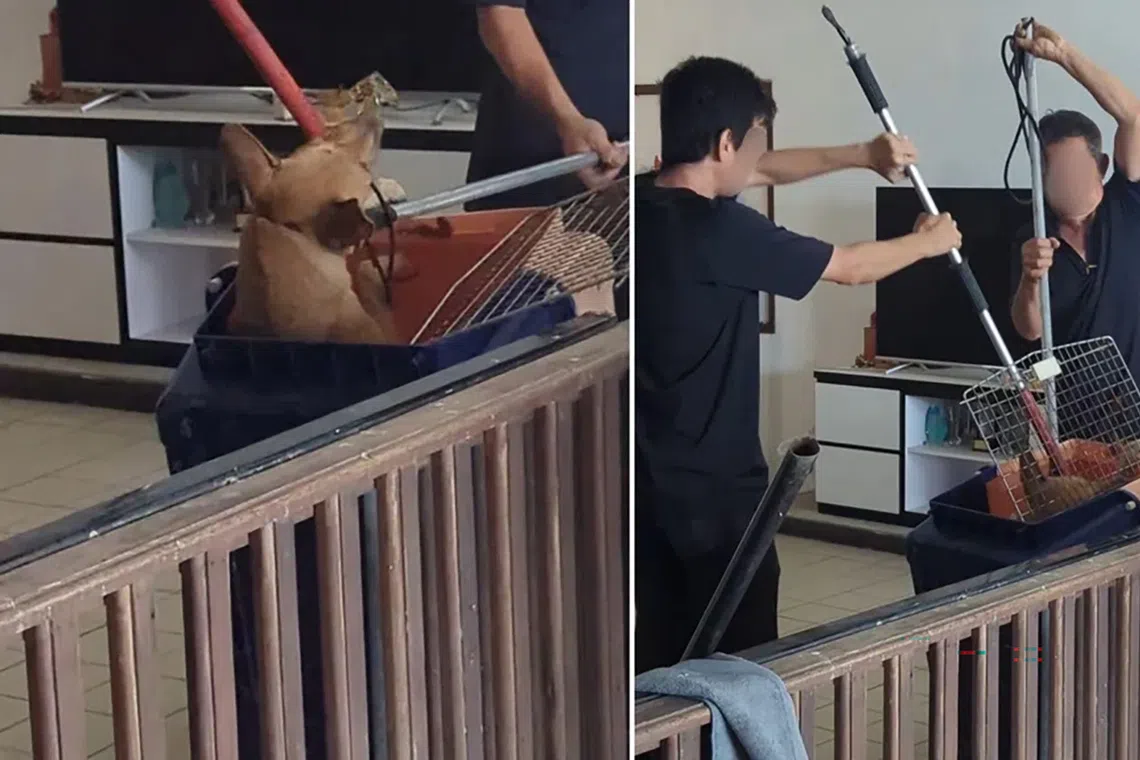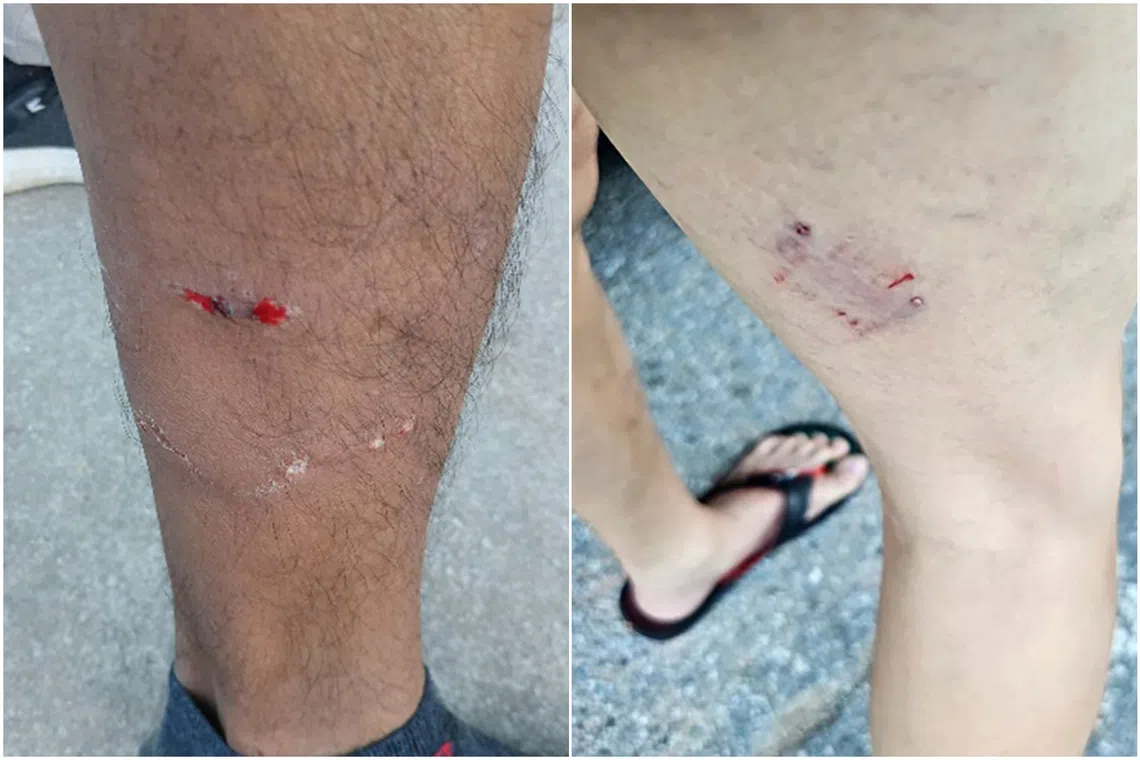‘Reasonable force’ used to catch dogs at Seletar West farm after 4 biting incidents: NParks
Sign up now: Get ST's newsletters delivered to your inbox

One video posted on Instagram shows a dog being pushed into a crate with two poles while it bites one of the poles.
PHOTO: STOMP
Follow topic:
SINGAPORE – Following four dog bite incidents since May – two of which happened within one week in November – the authorities moved in to remove three dogs from a farm in Seletar West.
Responding to concerns raised over whether the force used during the removal process was appropriate, the National Parks Board (NParks) said that considering the earlier bite incidents and high risk to public safety, the trapping of the dogs was achieved with “reasonable force”, and the equipment used was also in line with international practices.
Videos posted on Instagram by a private account on Nov 14 show two mixed-breed dogs being captured at the farm, with the third dog already inside a crate. At least five men are seen to be involved in the process. The video clips have since been posted on other social media accounts, including those of animal welfare groups.
One clip shows a dog being pushed into a crate with two poles while it bites one of the poles.
Another shows a second dog held at its neck with a pole and resisting capture. The dog is eventually lifted into a crate.
Several stains resembling faecal stains and blood can be seen on the ground.
The Instagram user who posted the videos wrote on the clips that “the dogs were so scared” and, referring to one of the dogs, that “this old dog was already injured, and now he can’t stand up after the shock”. She also claimed that one of the dogs was about 10 years old and walked with a limp.
In response to media queries, Dr Anna Wong, group director of the NParks Animal and Veterinary Service’s (AVS) community animal management division, said a total of four bite incidents were reported involving the dogs at Seletar West Farmway 8. She said the incidents included two within a span of six days in November, and that the victims had injuries ranging from scratches to puncture wounds requiring medical attention.
Thus, AVS needed to act immediately to safeguard public safety, and the decision was made to trap and remove these free-roaming dogs.
Based on accounts shared with the media through NParks, one of the victims was cycling along Seletar West Farmway 8 on May 25 when four dogs chased and barked at him. He had a puncture wound when a dog bit his right calf while he was cycling away.
Another victim was at the farm on Oct 11 looking at outdoor display plants when three dogs suddenly ran up to him without provocation or warning. One of the dogs bit his right thigh.

One of the victims had a puncture wound when a dog bit his right calf when he was cycling along Seletar West Farmway 8 on May 25. Another person was bitten on his thigh by another dog at the farm on Oct 11.
PHOTOS: ANIMAL & VETERINARY SERVICE
The other two incidents took place on Nov 2 and 7, with two victims separately wounded after being bitten.
AVS engaged the farm on where the incidents occurred, and the farm clarified that it did not own the dogs. The Straits Times understands that the dogs had been living within the farm.
As the farm agreed to remove the dogs for safety reasons, AVS deployed an animal management contractor on Nov 14 to carry this out under the supervision of AVS staff.
Considering the need to ensure both animal welfare and the safety of the personnel involved in the operations, as well as considering the earlier bite incidents, Dr Wong said the trapping was achieved “with reasonable force to safely secure the dogs”.
All equipment deployed was also in line with humane handling practices, she added.
The use of restraining poles to secure the dogs was in line with international practices such as guidelines developed by the World Organisation for Animal Health on stray-dog population control, she said.
She said no uncovered wire loops or other potentially harmful devices were used during the trapping process.
On the video showing the dog biting the pole while being pushed into a crate, Dr Wong explained that the contractor applied controlled pressure to the poles to loosen the dog’s bite and reduce tension on the restraining devices.
“This was carried out to prevent injury to both the dog and the contractor by avoiding forceful pulling that could cause harm to the dog’s mouth or neck,” she said.
On the other video, Dr Wong explained that one pole was used to guide the dog’s head towards the crate, while another staff member helped to lift the dog’s hind legs for safe transfer.
“This technique is a standard dog handling procedure to minimise stress on the animal while ensuring safe containment,” said Dr Wong, adding that the pole was not used to lift or suspend the dog at any point.
The bite victims have confirmed that the three dogs captured were the ones involved in the incidents.
The dogs are now in AVS’ care and are reported to be alert and eating well. There has also been no active bleeding observed since they were taken in.
AVS will continue to monitor them before assessing their suitability for rehoming under the Trap-Neuter-Rehome/Release-Manage programme.
Dr Wong advised those who encounter free-roaming dogs not to stare at them, and to speak softly and walk away slowly without making any sudden movements.

